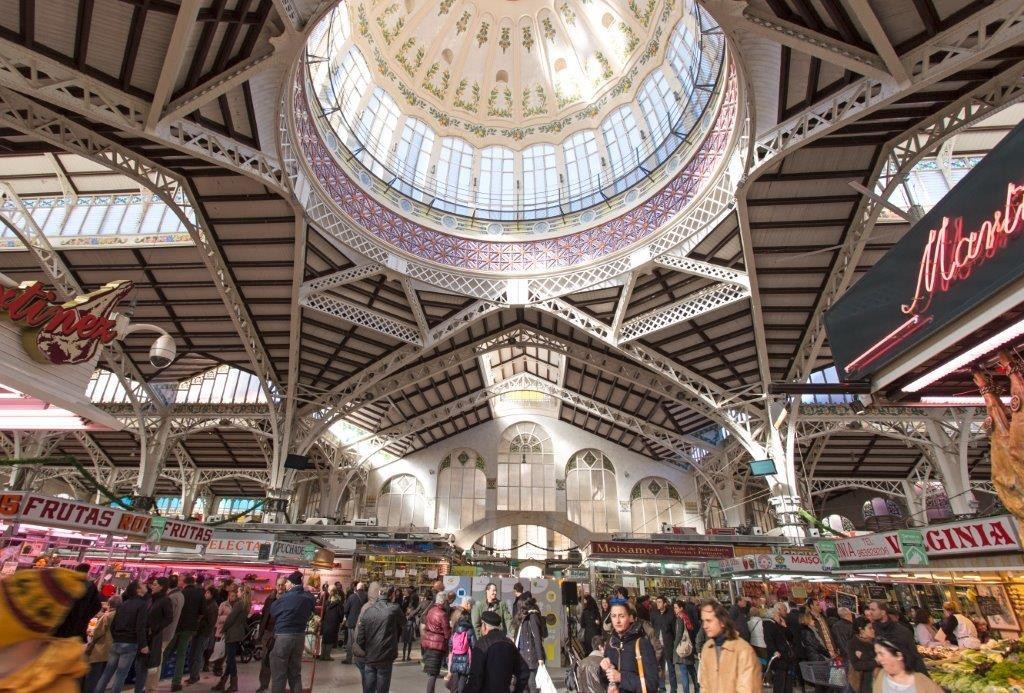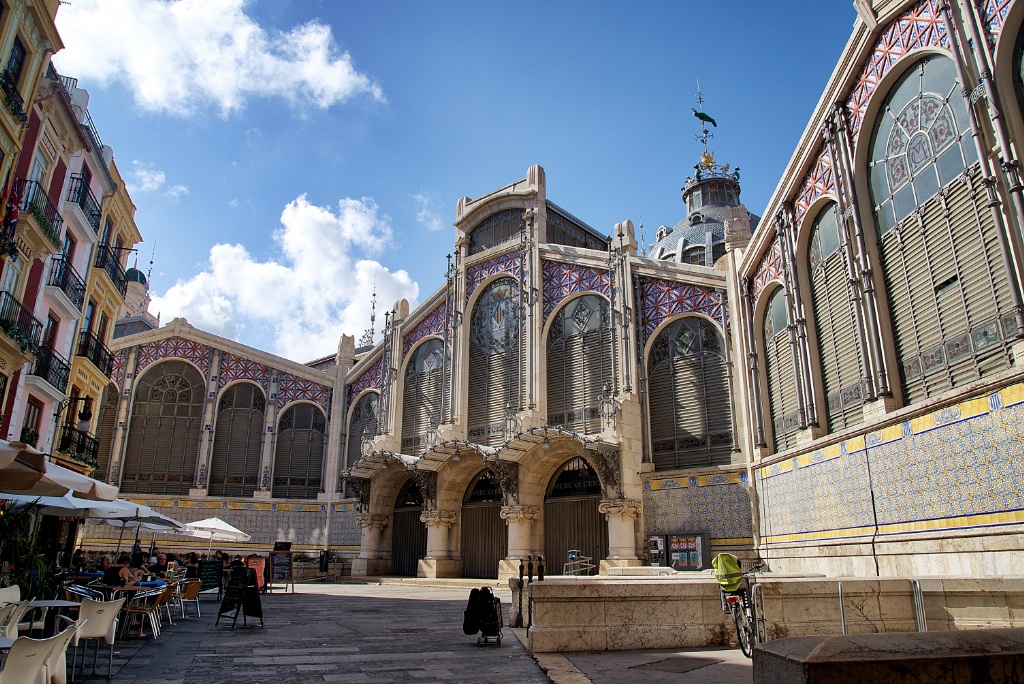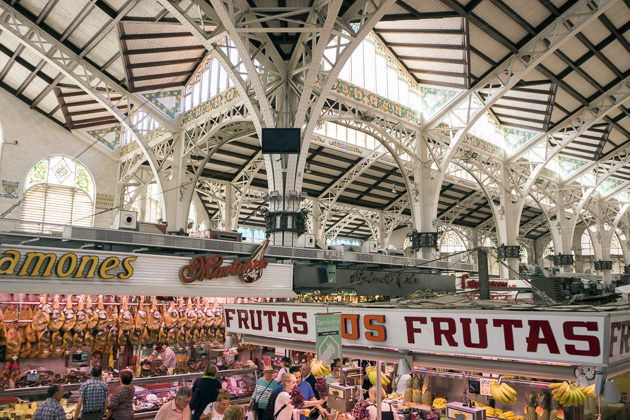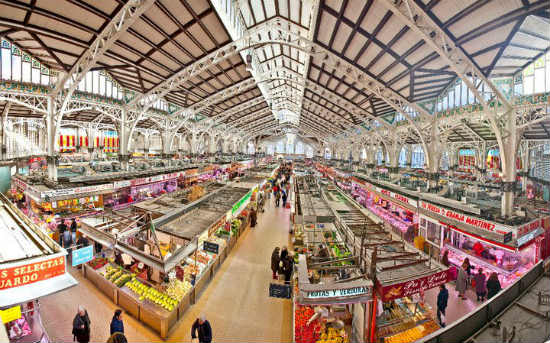
Many people have been seduced by its beauty, from the novelist Manuel Vicent, who recreated it in "Un tranvía a la Malvarrosa" (or Tramway to Malvarrosa), to the designer Miuccia Prada, who held a large private party inside with Demi Moore and Ashton Kutcher.
And even though growing numbers of tourists can be seen within its walls these days, the Valencia Central Market, that gem of Modernist architecture, is celebrating its 100th anniversary without losing the purpose for which it was originally built: selling fruit, vegetables, meat, fish, pickles and other food under a spectacular structure made of wrought iron, ceramic and glass.
Architects consider it to be not only one of the best markets in Europe, but also of America. There are bigger ones, sucha as the central market in Santiago de Chile, which is enormous in size. But from an architectural point of view, there is no comparison for the professional eye.
Spread over 8,162 square meters – enough space for 959 food stalls – the market was a very costly project at the time. It also seemed to be under some kind of curse. The decision to build it was made in 1881, but another 47 years went by before the opening ceremony in 1928. King Alfonso XIII laid the cornerstone in 1916, which is why the centennial is being observed this year.

The city of Valencia, which was sponsoring the project, called a public competition in 1910. The winners were two Catalan architects, Francisco Guardia Vial and Alejandro Soler y March. They designed the market, but for reasons that are unclear, but which were apparently related to payment, they refused to take charge of the construction phase, a task that fell to the municipal architects Enrique Viedma and Alejandro Romaní.
The building incorporated elements which were a novelty at the time, such as an enormous underground parking space for loading and unloading food crates in a crowded part of town. The irregularly shaped plot that the market sits on was previously occupied by residential buildings and two convents that were torn down to make way for the Mercado Central.

The market came to symbolize the Valencian bourgeoisie’s desire to modernize the economy. The market also symbolized the evolution of craftsmanship, applied to industry and architecture: locksmithing, ceramics, glass, carpentry and other trades. The market was like a showcase of everything that the city was capable of doing. And it was treated like a cathedral of food. The grandiose nature of the building’s upper portion matches the quality of the produce sold beneath.
Construction work was delayed by an abundance of political and financial crises that rocked City Hall at that period of time. In the meantime, another Modernist market was built in Valencia within the space of three years, the Colón market. It most probably went up so fast because it was located in a wealthy neighborhood. Curiously, its creator was Francisco Mora, whose bid for the Mercado Central a few years earlier had failed.
The building rises over an area which has been home to local markets for over 1,000 years, beginning with the Muslims who used to set up their food stands near the city wall, says Ángel Martínez, who has co-authored a book about the history of the Mercado Central, making this the longest running market area in Europe.
 The Mercado Central forms part of the golden triangle of Valencia’s urban architecture, together with the Lonja de la Seda and the Church of Sant Joan. The space occupied by the three has been a hub of activity, hosting processions, parties and even executions. The last victim of the Spanish Inquisition, Gaietà Ripoll, was hung inside the market after being accused of heresy.
The Mercado Central forms part of the golden triangle of Valencia’s urban architecture, together with the Lonja de la Seda and the Church of Sant Joan. The space occupied by the three has been a hub of activity, hosting processions, parties and even executions. The last victim of the Spanish Inquisition, Gaietà Ripoll, was hung inside the market after being accused of heresy.
Clogged by traffic for decades, the market square is being gradually pedestrianized. In the meantime, a new parking space is going up behind the building to facilitate access by car. Just like a century ago, much of Valencianos’ lives continues to play out around their central market.